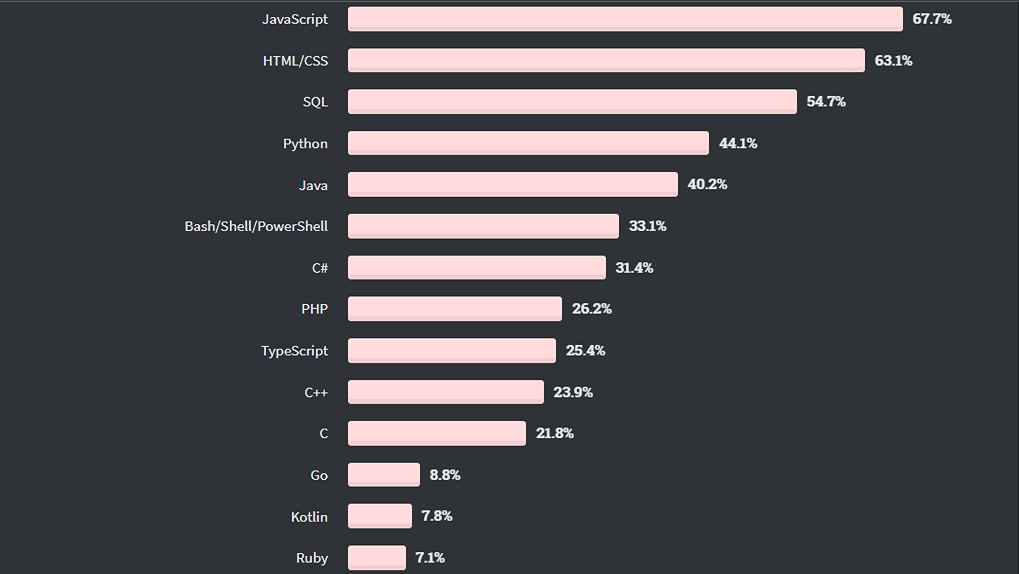Are you ready to take an exciting adventure through the world of programming? Imagine a language that enables you to swiftly develop applications with code that is as pristine as freshly fallen snow. Welcome to the world of Ruby, where developers worldwide have found solace in its embrace.
Let’s explore the core of Ruby to find out why programmers all over the world are so enamored with this open-source object-oriented scripting language that Yukihiro Matsumoto created in the middle of the 1990s. Unlike its counterparts, such as C and C++, Ruby, as a scripting language, does not communicate directly with hardware. Instead, an interpreter parses the text file and converts it to code. The beauty of scripting languages lies in their procedural nature, where instructions are executed from top to bottom.
The Beginnings of Ruby
Matsumoto’s visionary quest led him to create a scripting language that leverages the power of object-oriented programming, emphasizing code reusability and accelerating development. Thus, the Ruby programming language was born, equipped with a simple yet elegant syntax to handle data and logic, empowering developers to conquer even the most formidable challenges.
Versatility of Ruby
Ruby is not confined to a single realm; it is a highly versatile language that transcends boundaries and finds its place in various domains. Whether you seek to build desktop applications, static websites, data processing services, or automation tools, Ruby can be your loyal companion. It serves as the backbone for web servers, DevOps endeavors, and even web scraping and crawling adventures. But wait, there’s more! When you pair Ruby with the mighty Rails application framework, a world of possibilities unfolds before you, especially in the realm of database-driven web applications.
The Influence of Ruby on Rails
Speaking of Rails, it would be remiss not to mention the extraordinary impact it has had on Ruby’s journey. Ruby on Rails is the game-changing application framework that catapulted Ruby into the spotlight, boosting its popularity and establishing it as a top-tier language for cloud-based ventures. The experts at rubyonrails.org describe Ruby on Rails as an open-source web framework that puts programmers’ satisfaction and long-term productivity first. Within its framework, pre-written Ruby code takes care of mundane tasks such as communication, file handling, and database connections, liberating you to focus on the core challenges at hand. An essential concept within Rails is encapsulated in the acronym DRY: Don’t Repeat Yourself. This principle lies at the heart of Rails’ efficiency, allowing you to avoid redundancy and maximize your productivity.
Ruby vs. Python
While exploring the vast landscape of programming languages, it is impossible to overlook the frequent comparison between Ruby and Python. These two languages share numerous similarities and can be harnessed for similar purposes, causing a quandary for developers who must decide which language to embrace for their projects. Both Ruby and Python are high-level server-side scripting languages renowned for their clear and readable syntax. However, technical differences distinguish them from each other. For instance, Python boasts support for multiple Integrated Development Environments (IDEs), while Ruby restricts itself to EclipseIDE. Additionally, Python enthusiasts have the Django framework at their disposal, while Ruby developers thrive within the Rails ecosystem. Ruby shines with its powerful block feature, while Python offers a wider array of libraries. Delving deeper, we uncover more nuanced disparities. Some developers find Ruby more challenging to debug but appreciate its overall flexibility. In contrast, Python may appear more accessible at the outset but can feel limiting in the long run.
Why Learn Ruby?
Now, you may be wondering, “Why should I embark on this Ruby expedition?” The answer lies in the language’s design, meticulously crafted to enhance productivity and inject an element of joy into programming. Ruby’s high-level nature and elegant syntax alleviate the burden of excessive code, enabling you to focus on finding creative solutions to complex problems. Additionally, Ruby’s abstract nature and high-level functionality make it an easy language to grasp and implement. While many low-level languages demand countless lines of code for even the most basic tasks, Ruby empowers you to develop your first cloud application within a matter of hours. As evidence of its popularity, the 2020 Stack Overflow Developer Survey ranked Ruby as the 14th most widely adopted programming language globally, with 7.1% of respondents identifying as Ruby on Rails developers.

Ruby’s Superiority in Web Development
Ruby undoubtedly excels in web development, outshining Python in this realm. With hundreds of thousands of Ruby websites flourishing across the internet, it becomes apparent that this language holds immense potential for rapid application development.
Conclusion:
Embark on your Ruby odyssey today and discover the enchanting world that awaits you. Embrace a language that champions clean code, unleashes your creativity, and empowers you to forge your own path. Ruby beckons, calling upon you to join the ranks of skilled developers who have harnessed its power to create remarkable digital experiences. Your journey begins now.
